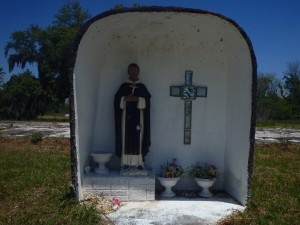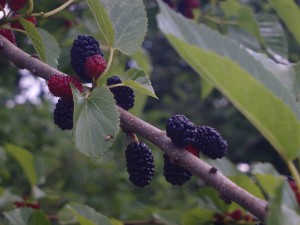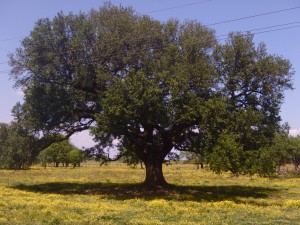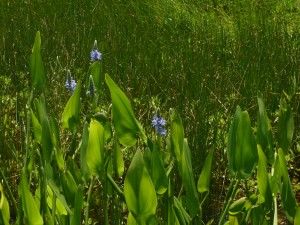
http://littlemagonline.com/tag/marina-fini/ Roadside shrine.
http://cathedral-lonavala.org/affi_ban/ My guidebook had not exaggerated when it said that there were no facilities between Pointe a la Hache and Poydras; for thirty-four miles there is not a single gas station, restaurant, grocery store, or anything else. I have often reflected on how important commerce is for community: we need public houses, and businesses are typically our public houses. This was my first extended run on the bike, and I was satisfied with the results: I finished the 34 miles comfortably in the course of the afternoon, seeing a great deal of what a stranger could see.
It was noticeable that I was moving away from the Gulf: the thickets on the side of the road were becoming true woods, with a rich variety of species. I saw what appeared to be mulberries with ripe fruit, and I stopped when I saw some more, and easily picked a pint of them. I found that the truly ripe ones were insipid, but fruits which were just shy of ripe – with some cells red rather than black – were extremely tasty. Over the next week I would eat a great number of mulberries, which I think are an underrated food source. A single mulberry tree can produce vast amounts of fruit in its season – I am told, enough to feed a pig for the two weeks of ripeness – and the tree is easy to take care of and never needs spraying. I remember last year a woman came in to the nursery to buy a mulberry. She said that she didn’t eat the berries herself, but her property always had the most remarkable birds during the summer, and then her mulberry was taken down by Hurricane Sandy. She swore her property was not the same during the summer without the mulberry – it had gone silent, the birds were gone. Customers like her were the reason Catskill Native Nursery exists – people who have realized that gardening is not just exterior decorating, but is the use of our intelligence to nourish life. This time, of course, it was nature’s intelligence, nourishing as it so often does my life.
Punctuating these woods were open fields where cattle were being pastured. I was surprised to see cattle farms in this area; the swamps did not appear naturally suited to the savanna ecosystem on which pasturage is based. Nor was I impressed with the results: the fields were coming up almost entirely in thistle and (especially) buttercups. Buttercups are in the Ranunculaceae family, which are almost all poisonous, and so are shunned by the cattle; but they had been allowed to take over the fields, so that it barely seemed any grass was growing there anymore. In older days weeds would have been hand-picked from such fields, or other animals would have been introduced that would eat the weeds – goats, for instance, have notoriously indelicate stomachs. And under natural conditions, buttercups will never dominate a field like this: this is the result of overgrazing, which has given poisonous plants a competitive advantage over nonpoisonous ones. Needless to say, pretty as the buttercups are, it is not pleasant, for someone who can see what is happening, to see pent animals grazing in a field of poisonous plants. There is something ominous and foreboding about it. It looks like no one is caring for the land. Every cattle pasture I saw south of New Orleans looked like this.
A stretch of road near the northern end of Plaquemines Parish ran by marsh again, as the sea approached closer. As I biked past several times large animals plopped into the water; I had to look closely and go slowly to see that they were muskrat jumping into the water. I was told I might see alligators along this stretch, but I did not.
I had ample time for good botanizing on a stretch of road so deserted: besides superb, giant live oaks, I saw several choice species: Iris fulva, an unusual orange iris; Iris giganticaerulea, the giant blue iris; Hymenocallis liriosme, the spectacular spider lily; the first Tillandsia (Spanish moss) I had seen, and Pontederia cordata, pickerelweed, a beautiful blue-flowered swamp plant. I had fewer conversations with people than I had with plants: one with a veteran who did not appear to be compos mentis, and kept repeating over and over again that he had been “all over, Ko-rea, Washington, Seattle… lots of places, like Ko-rea, Washington, Seattle…” He had waved to me to stop because he thought I was “one of those guys… in the hunting cabins.” And a conversation with a black couple that I saw sitting by a ditch by the side of the road with a bucket. I simply had to stop to speak with them. What the hell were they doing sitting by a ditch on the side of the road with a bucket?



One Trackback/Pingback
[…] you’re in a car, you drive by people sometimes and wonder, “What the hell were they doing?” But you’re already long past, and don’t circle back to find out. On a bike, you just press […]
Post a Comment